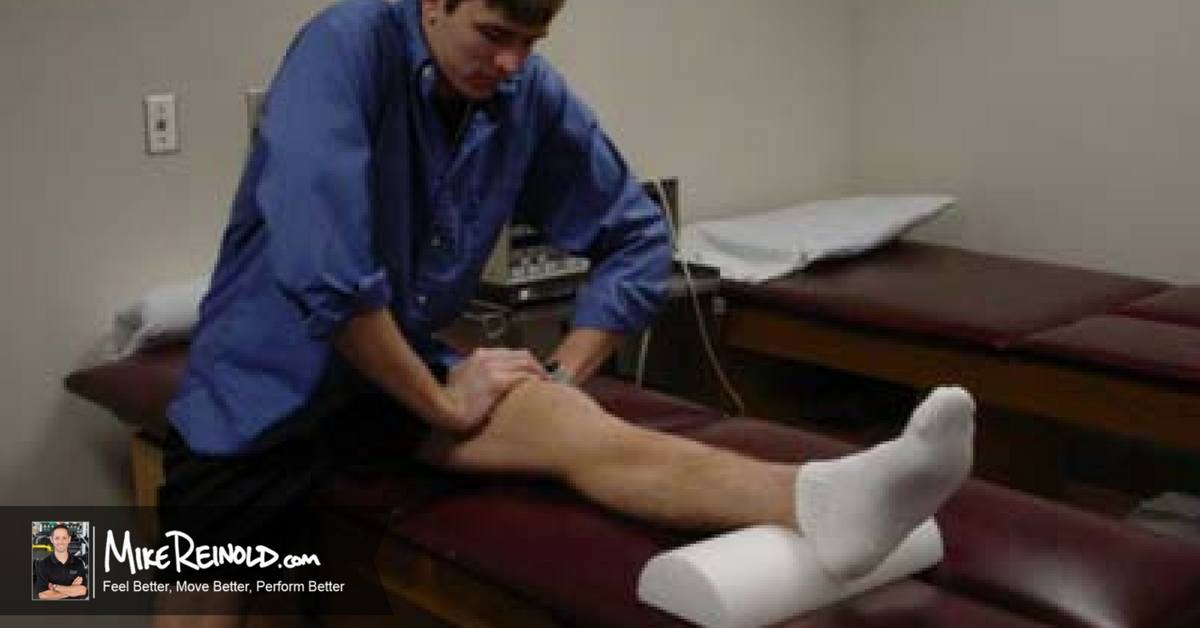 It is no surprise that loss of motion is one of the biggest factors in patient satisfaction following ACL reconstruction surgery, specifically loss of knee extension. In addition to the limitations in functional activities that occur with loss of knee extension, we have also discussed some of the risk factors of loss of motion following ACL reconstruction.
It is no surprise that loss of motion is one of the biggest factors in patient satisfaction following ACL reconstruction surgery, specifically loss of knee extension. In addition to the limitations in functional activities that occur with loss of knee extension, we have also discussed some of the risk factors of loss of motion following ACL reconstruction.
Loss of knee extension has a dramatic impact on gait, muscle activity, and normal tibiofemoral and patellofemoral arthrokinematics.
Imagine not being able to straighten your knee out. You can’t lock out your knee for stability. You naturally will shift your weight to the other extremity and overload your other knee, hip, and probably even your back. Your quad and hamstring never get to shut off and relax. Your patellar tendon will probably be on fire, and your patella will always be engaged and taking stress.
I can definitely see why patient satisfaction would be poor if you had long term loss of motion following ACL reconstruction!
Impact of Loss of Motion on the Development of Arthritis
In addition to poor patient satisfaction, recent research has shown that loss of motion following ACL reconstruction also results in the development of osteoarthritis. In a recent study in AJSM, Shelbourne et al followed 780 patients for a mean of over 10 years. They showed that of the group of patients that had normal motion on follow up examination, 29% exhibited signs of osteoarthritis on radiographs. Conversely, 47% of the group that showed loss of motion had developed osteoarthritis.
This makes perfect sense as your arthrokinematics, center of rotation of the joint, and tibiofemoral and patellofemoral contact pressure will be altered.
How Much Loss of Extension is Significant?
More importantly, the authors also showed that even a loss of 3-5 degrees of motion had a significant impact on both patient satisfaction and the development of early arthritis. Those subjectives that exhibited greater than a 5 degree loss of motion had an even more dramatic impact.
According to DeCarlo and Sell, the average amount of knee extension in healthy individuals is 5 degrees of hyperextension, with 95% of individuals demonstrating some amount of hyperextension in the knee.
Taking this into consideration, we should challenge the common belief that 0 degrees of knee extension is “normal.” Individuals with 5 degrees of knee hyperextension that only restored their knee to 0 degrees of extension after ACL reconstruction surgery have a significantly greater chance of developing early osteoarthritis.
Clinical Implications
Based on these recent studies, there are bunch of clinical implications that we should all consider. Here are just a few that I thought of right away:
- Timing of ACL reconstruction surgery and pre-operative rehabilitation is important to settle down the knee, reduce swelling, and most importantly restore range of motion.
- Knee extension should be restored as soon as possible after surgery, and should be one of the focuses of the initial postoperative phase
- Even a small 3-5 degree loss of either extension of flexion range of motion has a significant impact
- Most patients will have a certain degree of hyperextension, restoring a person to 0 degrees of knee extension is likely not enough
- For those training post-ACL rehab clients, keep this in mind if the individual does not have full motion. Advancing to exercises with high tibiofemoral and patellofemoral compressive and sheer forces before achieving full knee motion should be performed with caution.
- Each patient should be assessed individually and range of motion should be restored to their unique assessment
In regard to what to do with the tight person, here’s how I assess and treat loss of knee extension range of motion, but in the meantime I would love to hear what you think about this information and what you do with these patients.





